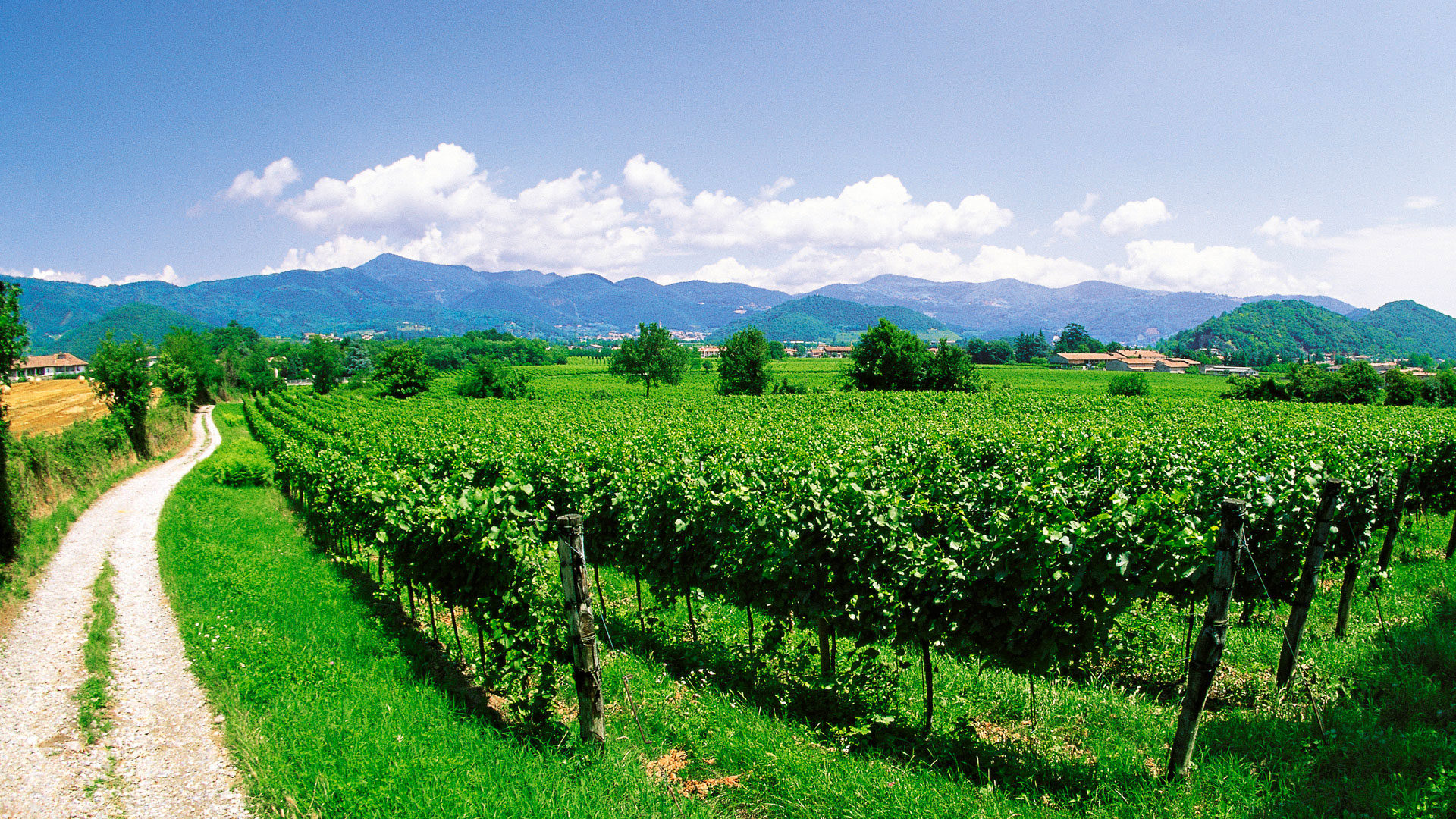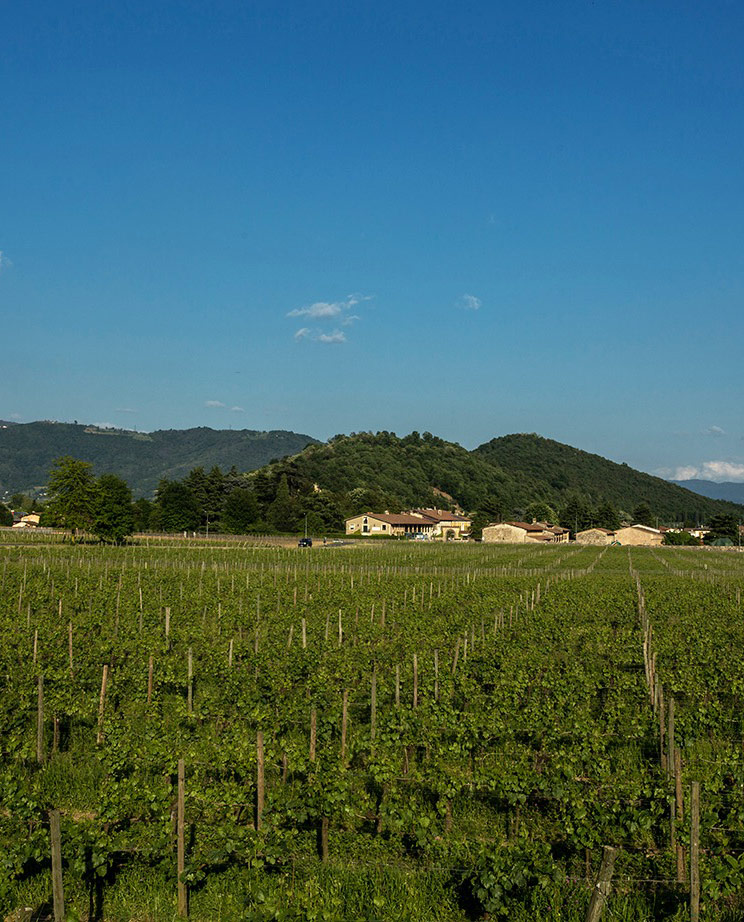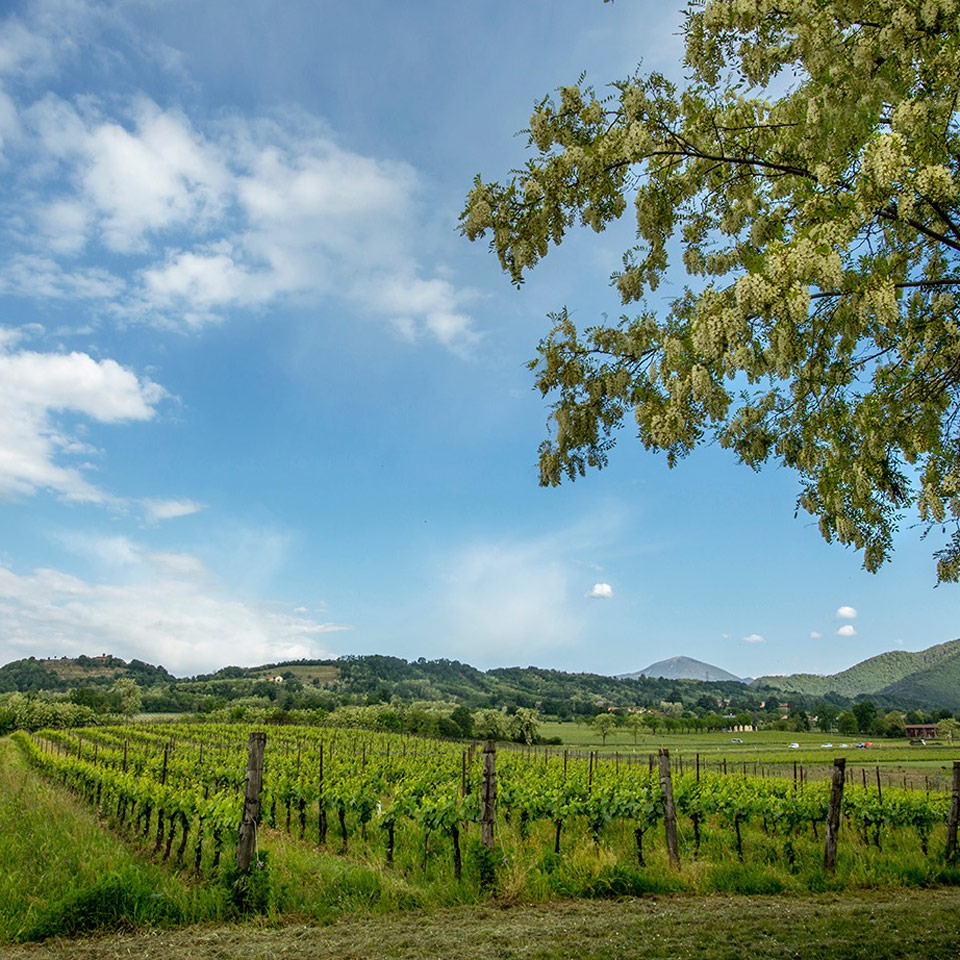
Our lands
The name of our village derives from the place-name Casa minore (ca’ mignon), thus indicating clearly its medieval origin as a monastic settlement of lesser importance, dependent on the nearby Cluniac abbey of Rodengo Saiano.
The attractive gentleness of the landscape here and its fine weather began, in the 15th century, to attract noble Brescia families, who constructed cellars surmounted by villas for summertime stays, and with surrounding farms of modest dimensions. Winegrowing persisted here, through plague, wars, and other vicissitudes, until the end of the 19th century, when Europe’s vines were devastated by the phylloxera, unwittingly imported from America. Viticulture flowered once more following the end of the Second World War. The soils and weather that characterise the area that surrounds us can be categorised into three of the six landscape groups that make up Franciacorta, and thus they characterise our vineyards.

ANCIENT MORAINIC
These are very deep soils, with abundant pebble-gravel admixture, non-calcareous and with good drainage. These conditions feature early fruit ripening, fairly good sugar levels, and excellent acidity/pH ratio. They yield surpringly refined, elegant base wines that are naturally well-balanced and well-structured, suited for long cellaring.
Recent morainic deposits
These soils are built of fluvio-glacial deposits, level or slightly rolling, coarse in texture, easily permeable, neutral, with sandy-gravel substrata, and with good exchange potential. The vineyards in this group, characterised by moderate vine vigour, average bud fertility, cluster weight and number. Grapes ripen mid-early, with good sugar and pH levels, yielding rich, complex base wines that show fine length.

Intermediate morainic deposits
These soils originated from glacial and fluvio-glacial deposits, are medium deep and permeable, with sandy-loam texture and common to frequent pebble-gravel admixture. They exhibit a specific climate, and their particular aspect and tolerance of scarce water heighten the aromatic complexity of Pinot Noir and the minerality and delicacy of Chardonnay.
The Riches of
FRANCIACORTA
Franciacorta is a magnificent area to the south of Lago d’Iseo, in the province of Brescia, extending out over gently-rolling morainic hillslopes
Grape varieties
and Vineyards
The structure of the soils where the vineyards are planted in morainic areas is more calcareous than clay, and moderately deep
Art and expertise in
the cellar
The cellars are sited for the most part in ancient structures dating to the 16th, 17th, and 18th centuries, and from 2018 in the new cellar builded on three underground floors and a ground level
BORGO
MOSNEL
Borgo Mosnel lies in Camignone di Passirano, in the Contrada Barboglio, the latter area named for the family that inherited the property in 1836.